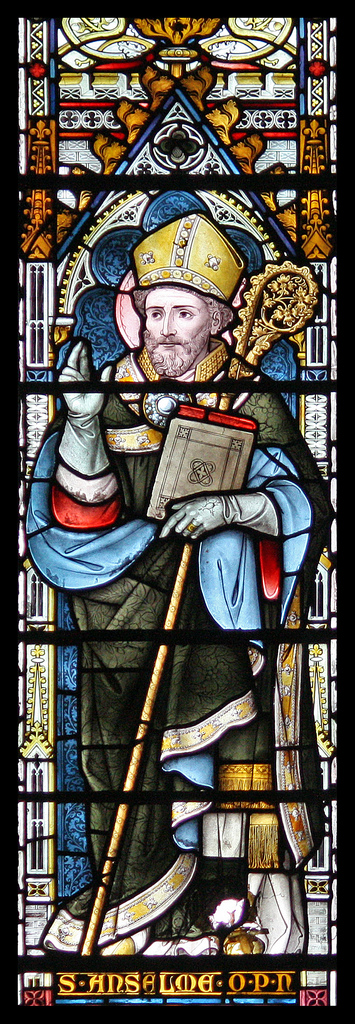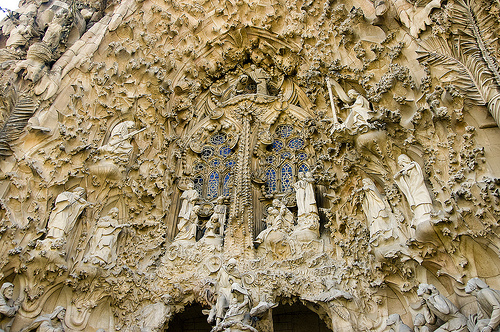

In the eleventh century, Anselm and theologians like him began to interact with a larger world of ideas, specifically the Muslim theologians who were challenging some of the central tenets of the Christian faith. In the centuries previous, theology had largely been an increasingly ad intra discussion among the theologians of Christendom. As Muslim writings (and even the occasional Muslim thinker) began their movement into Europe, they began to challenge theological positions which had been taken for granted. It is in this context which Anselm developed his most famous contribution to the world of ideas: the Ontological argument for the existence of God. This argument was Anselm’s attempt to argue for the existence of God from the basis of reason alone, not from the preconceived assumptions of Christian understanding of God. While the argument was challenged almost immediately as flawed, Anselm believed he had demonstrated reasonably the fact of God’s existence. Although the argument has never been that popular, it still has had its advocates: Descartes’ famous cogito is a form of the ontological argument, Alvin Plantinga also advocated a modified form of the argument, and C.S. Lewis uses it in The Silver Chair in the Narnia series (the latest issue of Touchstone has an article on Lewis’ use of the ontological argument).
As important as the ontological argument is, I do not think that it is Anselm’s most important work; the Cur Deus Homo (CDH) occupying that position in my mind. In the CDH, Anselm is trying to answer the question – why did God have to become man? Clearly we do not want to say that God had to become man for his own benefit, that in some way the incarnation changes God as God, but Christian theologians do think of the incarnation in some sense as a necessity. Anselm does not think in terms of logical necessity or that God was compelled to act. The incarnation – like creation itself – must be understood as an act of grace. The kind of necessity in which Anselm places the incarnation is the very medieval understanding of fittingness. Specifically, he wants to say that it was fitting that God should come in flesh for human salvation to be effected. He opens the CDH with this question which is the basis for the rest of the work: “By what logic or necessity did God become man, and by his death, as we believe and profess, restore life to the world, when he could have done this through the agency of some other person, angelic or human, or simply by willing it?” (Anselm of Canterbury: The Major Works [New York: OUP, 1998, 2005], 265). In other words, the incarnation seems to be completely unnecessary: could not someone else have died, or perhaps an angel, or why could God not simply will human salvation? Isn’t God powerful enough, or knowledgeable enough to figure out a different way? Anselm’s purpose in the CDH was to show that this way – the way of the incarnation – actually makes the most sense. It is fitting: kind of like being perfectly designed to achieve the desired outcome perfectly.
For Anselm, the answer to the question – why the God-man – is developed in several different ways, all of which point to its fittingness. I think the following demonstrates the main thrust of Anselm’s answer:
For it was appropriate that, just as death entered through the human race through a man’s disobedience, so life should be restored through a man’s obedience; and that, just as the sin which was the cause of our damnation originated from a woman similarly the originator of our justification and salvation should be born of a woman. Also, that the devil, who defeated the man whom he beguiled through the taste of a tree, should himself similarly be defeated by a man through tree-induced suffering which he, the devil, inflicted (268-9).
Nothing is wasted – everything fits in the incarnation. Human salvation is not simply about the death of Christ – there is much more going on for Anselm. The incarnation, what we celebrate and anticipate during Advent, was for Anselm about God’s reclaiming humanity. He adds later, “The human race, clearly his most precious piece of workmanship, had been completely ruined: it was not fitting that what God had planned for mankind should be utterly nullified, and the plan in question could not be brought into effect unless the human race were set free by its Creator in person” (269).
This idea of the solution to the problem mankind has brought upon himself having to be both God and man, in one person, is very important to Anselm’s project. “For he cannot do this if he is not true God, and he has no obligation to do so if he is not true man” (321). In other words, man has the obligation to fix the ruin he has brought upon himself but he does not have the ability. God has the ability, but there is no sense in which you can say that God has the obligation. God cannot simply will the fault away, because the problem is not God’s but mankind’s. Another man, according to Anselm, could not be the one to fix the problem because he would have to save himself first – before he could save another. A man who does not need saving is the only one who could bring about the salvation of humanity. Anselm also rejects the idea of an angel as the substitute because that would mean mankind would owe their allegiance to an angel, and not to God. Anselm rejects all options as unfitting, all the time developing his argument: in order to complete human salvation, it was fitting for God to act for man, as a man.
Lewis plays with this same idea in Mere Christianity, from a slightly different perspective: the perfect penitent. What mankind needs, in his state of rebellion, is to perfectly repent, but only a perfect person can perfectly repent. God can be the perfect repenter, but God does not need repentance. Lewis’ solution sounds very similar to Anselm’s: suppose that God becomes man. Lewis says, “He could surrender His will, and suffer and die because He was man; and He could do it perfectly because he was God” (Mere Christianity, 60).
For both Anselm and Lewis, the incarnation is God’s solution to the problem of human sinfulness; God’s merciful response to mankind’s problem of rebellion. In the incarnation, God is doing something which mankind could not do for himself – surrender, suffer and die in a perfect way. This could only be done by another; another who was both man and God in one person. Advent is about our need – the need to recover what was lost in the fall. But it is also about God’s love – His love for His special creation, who in spite of their wandering hearts, is still made to live in communion with God. But without intervention, God’s intervention, that cannot happen. Advent then is not just the anticipation of God with us; it is also the anticipation of God for us. It is the anticipation of the coming of the solution to humanity’s problem. It is also the anticipation of the fulfillment of human longing – when we shall be with God, and shall see Him as He is. This Advent season, do not just focus on the coming of the incarnate God; anticipate the vision of God.


I am a PhD student in theology at Catholic University of America in Washington, DC. I am studying the theology of John Williamson Nevin, who taught in the seminary of the German Reformed Church in America in the mid-nineteenth century. He was also the president of Franklin and Marshall College and a friend to James Buchanan, the 15th president of the United States. I am currently a teaching fellow at CUA, teaching undergraduate theology and Church History classes. My goal is to teach at a college or university after completing my degree program. I am also the current vice-president of the graduate student association at CUA. Before life as a grad student (if that were an acronym it would be BLaaGS) I was a teacher and principal in secondary education at various Christian schools in the Northeast. My family and I currently live in Hagerstown, MD.

Engaging and beautiful post -Cur Deus Homo would be – should be – as important today as when it was written.